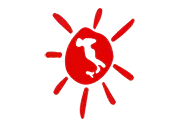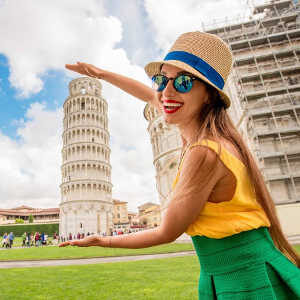This Florentine church is known as the city’s first great basilica and the region’s Dominican church.
Situated opposite the main train station, the building sits within the Piazza Santa Maria Novella, one of the biggest squares in Florence. Known as one of the most important and spectacular Gothic churches in all of Tuscany, Santa Maria Novella features exceptional beauty both on the inside and out, home to extraordinary works of art and historic architecture.
The History of Santa Maria Novella
The Santa Maria Novella church was designed by two Dominican friars, named Fra Sisto Fiorentino and Fra Ristoro da Campi. They started construction on the building in 1246, but it wasn’t completed until 1360, finishing at a similar time to the nearby Romanesque-Gothic bell tower and sacristy. The name ‘Santa Maria Novella’, translates to ‘new’ which is about the building being built on the site of the 9th-century location of Santa Maria delle Vigne. At that time of its original completion, however, only the lower section of the facade was finished, with a series of Tuscan Gothic arcades creating a truly magnificent finish.
The Exterior of Santa Maria Novella
However, in 1456, a wealthy Florentine wool merchant named Giovanni di Paolo Rucellai commissioned Leon Battista Alberti to design the upper green marble of Prato and white marble façade of the church. Alberti created further detail on the structure, by using the Renaissance principles of architecture to blend his work with the already existing façade. He did this by introducing a broad frieze decorated with squares, four columns with Corinthian capitals on the façade, as well as introducing S-curved volutes, which were used to hide the sloping roof of the building.
The interior of Santa Maria Novella
The interior of the church is just as stunning as the outside, designed in the form of a Latin cross. The inside features a number of stunning masterpieces, most particular the early Renaissance artwork of the Holy Trinity, created in 1425 to 1427 by Masaccio. This work showcased his ideas of perspective and mathematical proportions in art. Within the Basicilla lies several chapels, including Filippo Strozzi Chapel, Strozzi di Mantova Chapel, Gondi Chapel, Bardi Chapel, and Rucellai Chapel. By far the most important chapels are the Strozzi Chapel and the Gondi Chapel, with Strozzi being the location of the very first tale of Decamerone by Giovanni Boccaccio. As well the Gondi Chapel, which dates back to the 13th century.




